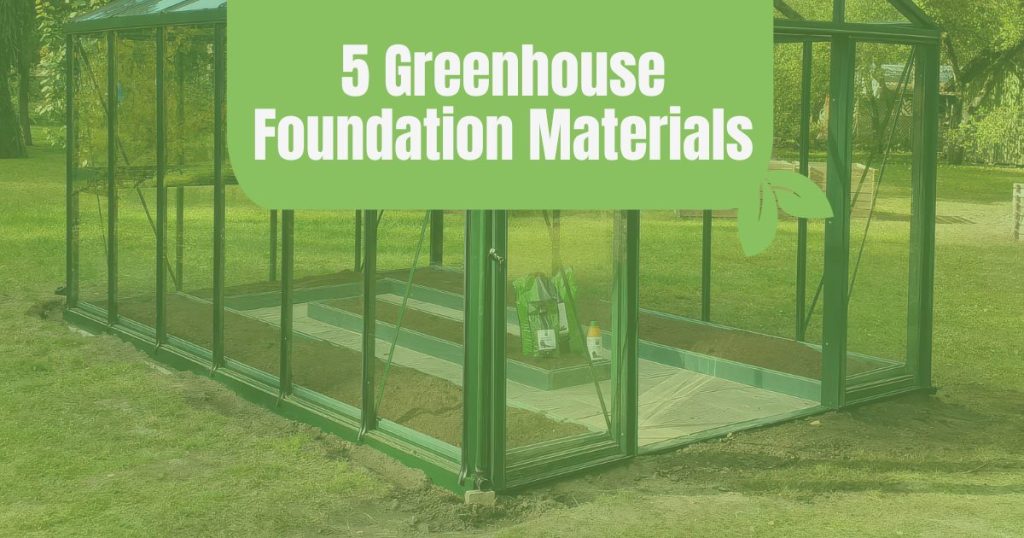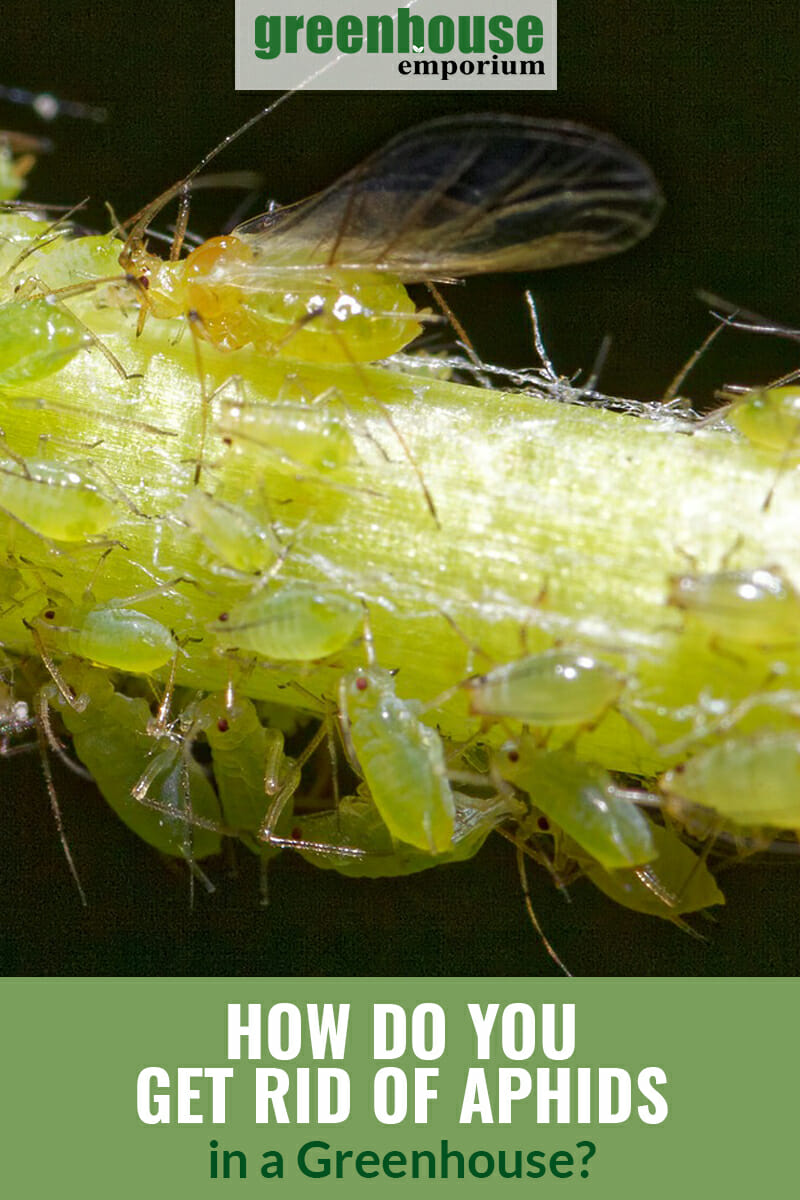

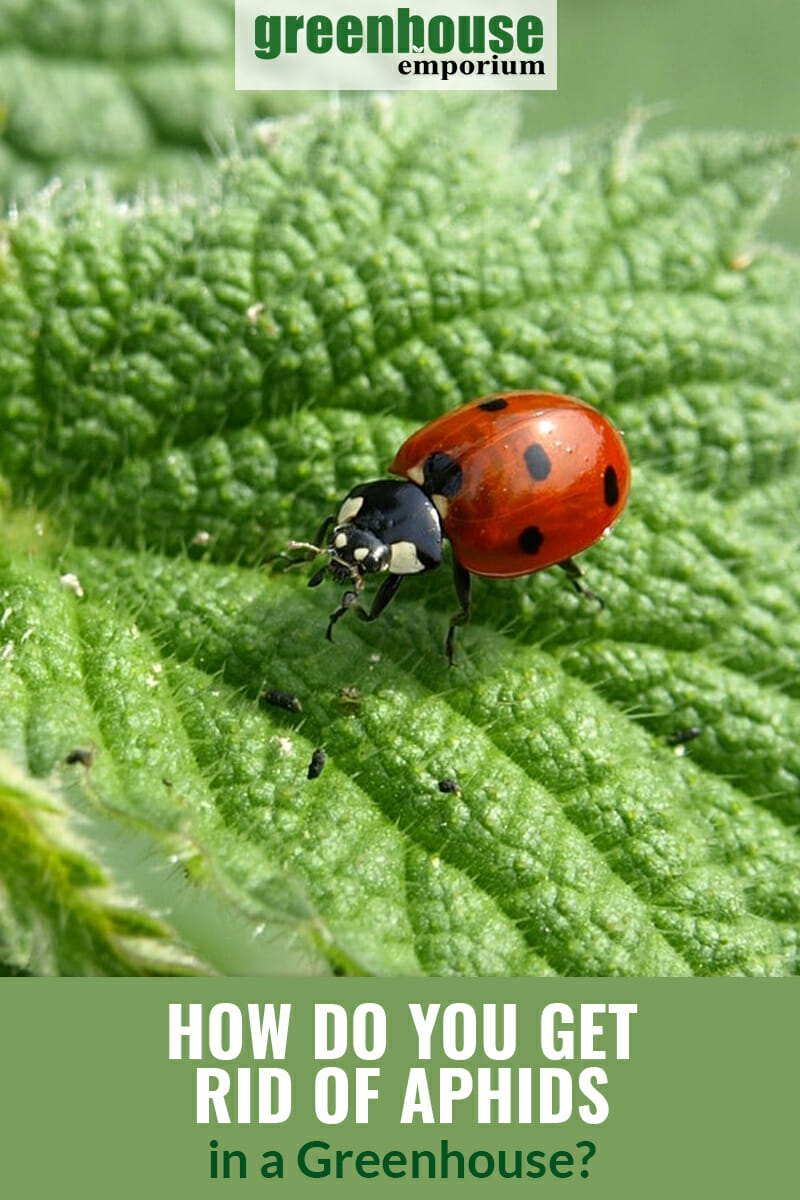
Aphids may seem like harmless little creatures, but they can be a gardener’s worst enemy when they infest a greenhouse. They can enter your greenhouse unnoticed due to their size. Before you know it, they are breeding rapidly and taking over every square inch of plant in your greenhouse.
So, how do you get rid of aphids in a greenhouse organically? Your best option is to use a variety of methods at different stages of infestation: prevent, repel, and remove. If you don’t control an aphid infestation properly, they’ll keep coming back to your greenhouse again and again.
Whether you are looking to prevent an aphid infestation or need to deal with one right now, it is important to know how to control aphids so you can protect your greenhouse. Although aphids are soft-bodied and susceptible to many forms of pest control when hit directly, they hide easily in the folds of plants or under leaves and reproduce extremely quickly.
But why should you care so much about aphids, when they appear so harmless? Keep reading to find out.
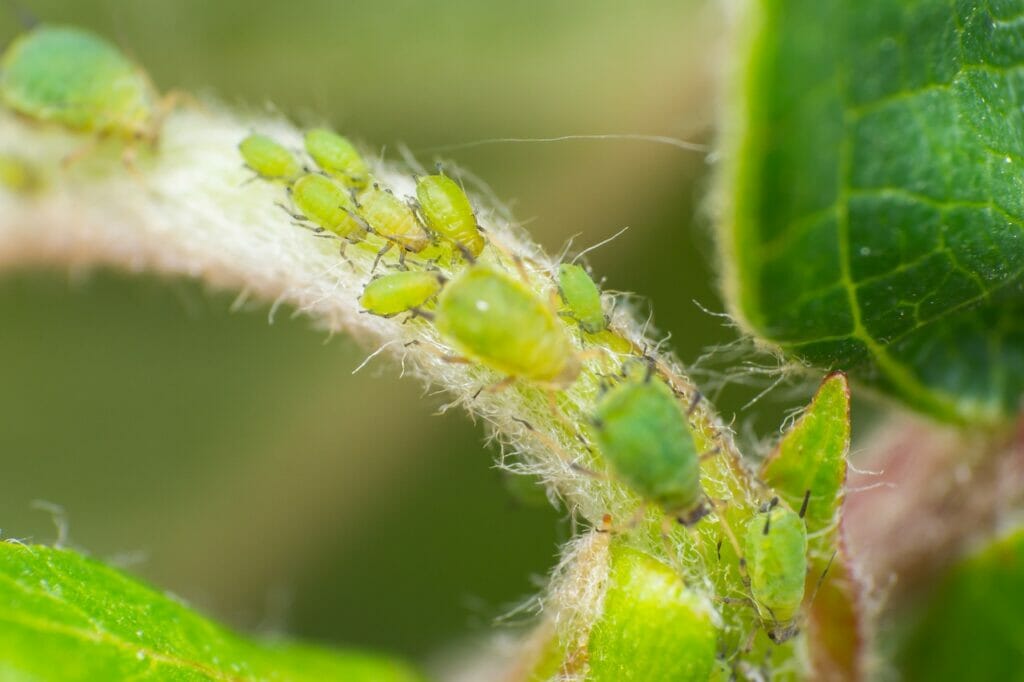
Why are aphids a problem?
Aphids are small, soft-bodied, sap-sucking insects. Because of their size, they can be hard to spot until they’ve got a stronghold in your greenhouse. What’s more, aphids can transmit viruses to plants within seconds of infestation, which not only damages the individual plants but can spread rapidly to the rest of the greenhouse.
There are many different viruses that can be spread to plants, affecting all aspects of plant, leaf, and fruit growth. It’s not for nothing that these little insects are sometimes referred to as a gardener’s worst enemy! In addition to spreading viruses, they secrete a sticky substance called honeydew that promotes the growth of mold and attracts other insects such as ants.
Controlling aphids in your greenhouse is extremely important for the health of all of your plants, but because of the nature of greenhouse growing, you’ll want to avoid using harmful chemical sprays. Read this article carefully to learn about ten ways you can control aphids naturally.
10 tips for an aphid-free greenhouse
I’ll tell you a little secret: aphids love to hide on the undersides of leaves. Inspect these areas often to monitor the presence of aphids in your greenhouse. Even once you’ve started with aphid control, keep checking the undersides of leaves to check the effectiveness of your control and whether further action is needed.

The best way to rid your greenhouse of aphids effectively is to apply more than one method. We’ve given you ten great methods here, so decide which ones will work best for you and your situation.
How to prevent aphids from infecting your greenhouse
Before you go and try to eliminate every last aphid from your greenhouse, it’s important to determine what kind of infestation you’re dealing with. Look under the green leaves of plants, on the stems, and in any folds or flowers for clusters of the soft black, brown, or green insects.
If there’re only a few aphids, this is the perfect time to prevent them from forming a stronghold. If you’re already dealing with a major infestation, you’ll have to use several methods to eliminate them. Either way, in order to keep your greenhouse aphid-free both now and in the future, it’s imperative that you use preventative methods.
1. Repel aphids with reflective mulch
If the aphid population is relatively low in your greenhouse, you can try this preventative strategy: applying reflective mulch around your plants. This method is often used in commercial agriculture to repel migrating aphids from landing on plants because they will “see” the light reflected off the mulch instead of the plants.
Most reflective mulches are made out of thin sheets of aluminum or white plastic. Using reflective mulch has the added benefit of increasing light and heat in a greenhouse. Some also believe that the reflection of light will deter aphids from hiding underneath leaves because they prefer to hide in dark nooks and crannies.
The good thing about reflective mulch is that in addition to controlling aphids in your greenhouse, they’ll also boost plant growth and help to prevent weeds. You can deter aphids by placing reflective mulch just beneath the plants, but you’ll need to take the weeds off first and hold the edges down with stakes or a bit of soil.
2. Grow aphid-repelling plants around your greenhouse
Plants with strong fragrances can help keep aphids at bay. Plants such as alliums (onions, leek, garlic, and chives) or flowers such as marigold are especially effective at repelling aphids. A number of other repellent plants include herbs with powerful scents such as peppermint, dill, and fennel. By keeping some of these plants in your greenhouse at all times, you are making it a less attractive environment for the aphids.
Make sure to check out our growing guides for aphid-repellent plants like chives, leeks, and herbs!
3. Add aphid “trap” plants to your greenhouse
You can trick your enemies with a trap plant or flower that’ll attract them so they stay off the plants that you actually care about. The aphids would be so in love they won’t even notice your precious plants so you can rest easy! All you need to do is grow plants like nasturtiums, calendula, and nettles close to the plants you want to deter aphids from or simply around the perimeter of your greenhouse.
Once the aphids get hooked on these trap plants, you can pull them out and trash them properly. Nasturtiums are particularly a great choice for aphids as they are the aphids’ favorite. They are beautiful, so they’ll enhance your environment and still distract your enemies – it’s a win, win!
This method is highly effective at preventing an aphid infestation, so start growing these plants early in the season. Although it can help control the aphid population in your greenhouse, it is less effective at dealing with a serious infestation.
4. Don’t over-fertilize your plants
Aphids are attracted to tasty, fresh shoots. To help deter aphids, avoid over-fertilizing your plants as excessive nitrogen stimulates a flush of new growth that’ll increase the population of aphids in your greenhouse in no time.
If you’re using fertilizer in your greenhouse, consider applying a slow-release fertilizer or feed your plants small amounts throughout the seasons instead of all at once.
5. Water your plants correctly
Plants are more susceptible to pests like aphids in extreme conditions. In hot, dry conditions, your plants are stressed out and won’t have the ability to produce the chemicals they need to deter pests. In addition, nitrogen and sugar are more concentrated in dry plants, which makes them even more attractive to aphids.
To help ensure the health of your plants and to further prevent an aphid infestation, make sure to keep your plants adequately watered.
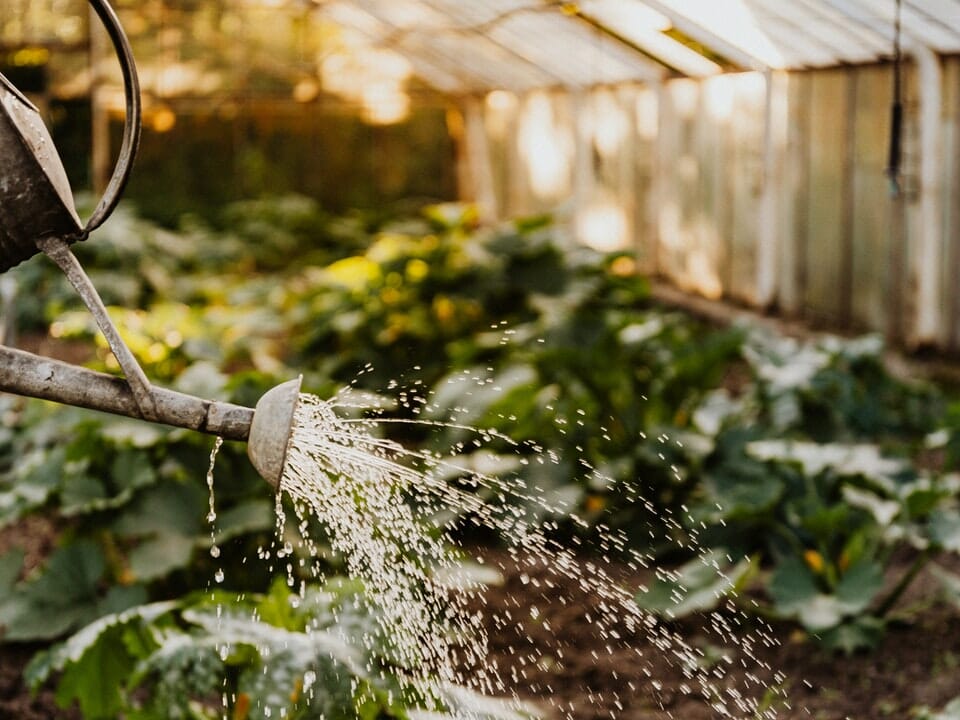
How to get rid of aphids
Now you’ve learned some great methods for preventing aphids from infesting your greenhouse. However, if you’re already dealing with a serious aphid population, those methods won’t be enough on their own. You’ll need to pair preventative methods with at least one method that will get aphids out of your greenhouse.
1. Physically remove aphids from your plants
When you first notice aphids in your greenhouse, especially early on, you can control their population by physically removing them from the greenhouse and your plants. There are several ways to go about this:
- Knock them off the plant by hand using a brush or glove
- Prune infected areas of the plant
- Spray the plants with a stream of water using a simple garden hose
All of the above methods are effective at removing aphids. Because aphids are small and vulnerable, knocking them off your plants usually damages them and prevents them from climbing back up.
This method is best applied when the aphid population is still manageably low and when your plants are strong enough to handle pruning or being sprayed by water. Keep in mind that this method alone will neither permanently nor entirely eliminate aphids in your greenhouse, but it can help you to maintain their population at a manageable level and reduce the stress on your plants.
2. Protect your plants with neem oil
Neem oil has earned its title as an effective and natural form of insect control, especially against aphids. Neem oil is made from the seeds of the neem tree, which contain active chemicals that can kill aphids, ants, and other bothersome insects. It is best applied in the morning or evening to prevent sun damage to your plants and to avoid unnecessarily spraying and killing beneficial insects such as bees and green lacewing.
You can use neem oil by adding a few tablespoons to a gallon of water. Add a couple drops of biodegradable dish soap to create surface tension and increase the effectiveness of the mix. Using a garden sprayer – either hand-pumped or electrical – apply the mixture all over your plants. Neem oil is also highly effective against various diseases such as powdery mildew.
3. Get rid of aphids with insecticidal soap
Another natural form of pest control against aphids is insecticidal soap. Insecticidal soaps are safe to use around humans and plants, and are effective because they disrupt the structure of pests’ membranes and suffocate the insects. Insecticidal soap acts upon contact with aphids but loses its effectiveness once dry. You can find it at most garden stores.
You can occasionally apply insecticidal soaps on areas of your greenhouse where you find aphids. But to completely get rid of aphids in your greenhouse, spray insecticidal soap underneath the leaves of your plants twice a week until the aphids are gone. Make sure to follow any additional instructions on the package.
4. Kill aphids with diatomaceous earth
Diatomaceous earth (DE) is an organic material that can be very helpful for controlling aphids and reducing ants. It looks like white dust that is made from crushed fossils called diatoms (hence the name). Although it’s harmless to humans, the dust is actually very sharp and will damage the exoskeleton of aphids, thereby killing them.
Lightly dust the aphids directly, or dust on and around your plants to kill the aphids. You’ll have to occasionally reapply this treatment since it will lose its effectiveness once wet. Applying DE around the edges of the plant beds in your greenhouse will also help you keep the population of aphids down. It’s advisable to use food-grade DE and also make sure to wear protective gloves while applying it.
5. Let the beneficial insects help you!
Sometimes, it’s more effective to get natural predators of aphids to do the job for you. Beneficial insects like ladybugs, damsel bugs, hoverflies, and green lacewing can significantly bring down the population of aphids in your greenhouse without causing harm to your beautiful plants. Did you know that a single adult ladybug can eat 50 aphids in one day?
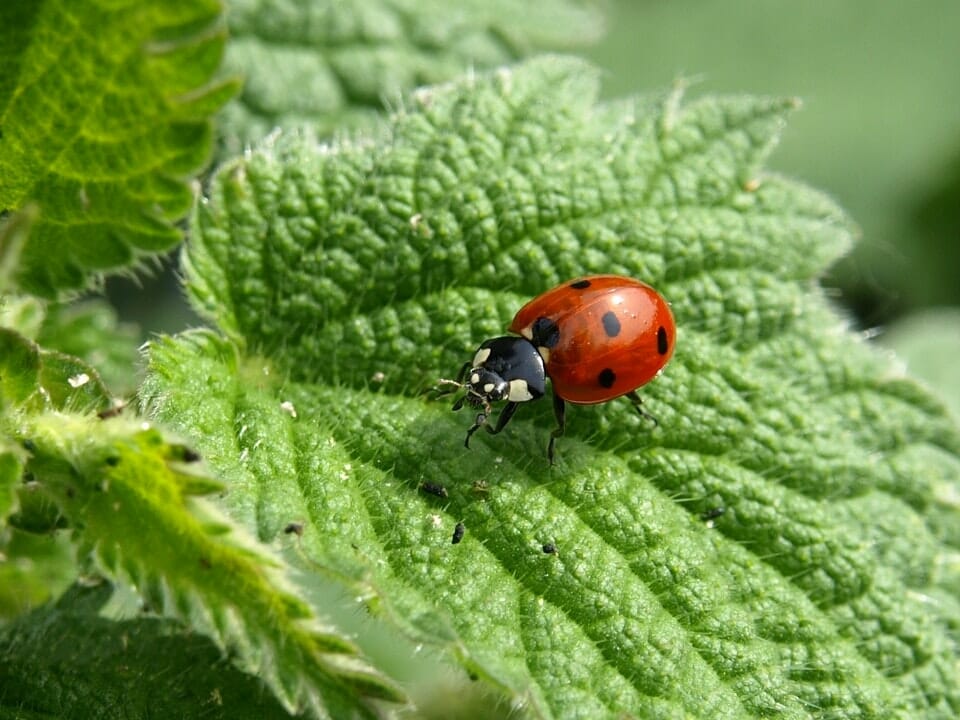
You can purchase these insects in bulk at most garden stores or attract them into your greenhouse by planting attractive flowers like marigold or oregano. If wasps aren’t an issue for you, even a small population of them can make the aphids disappear for an entire season.
Bonus: does vinegar kill aphids?
Some people consider it a myth that vinegar can kill insects such as aphids. However, it’s not! If your plants are infested with aphids, spraying white vinegar mixed with water on the underside of the leaves can help you get rid of them. It’s another natural remedy that’s great for short-term use, and is not harmful to humans.
However, excessive use of vinegar can damage some plants that aren’t tolerant of its acidic nature. If you intend to use vinegar to kill aphids, mix only a small amount with water to dilute it. For best results, don’t use this method in isolation, rather, combine it with some of the methods described above.
Finally, although the above aphid-control methods are natural and mostly harmless to humans and plants, use them with caution. Some of these methods can and will affect other insects, so don’t use them indiscriminately.



